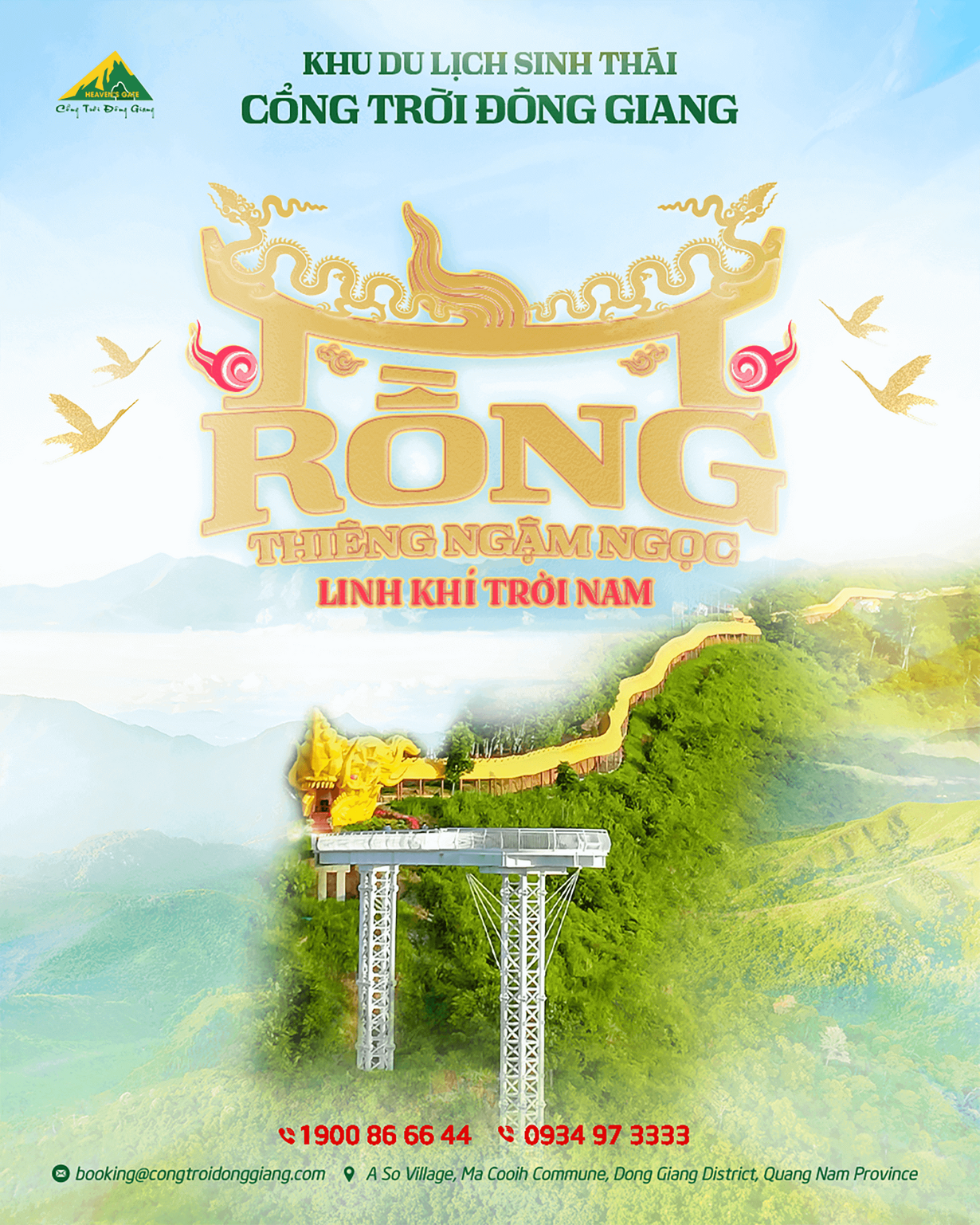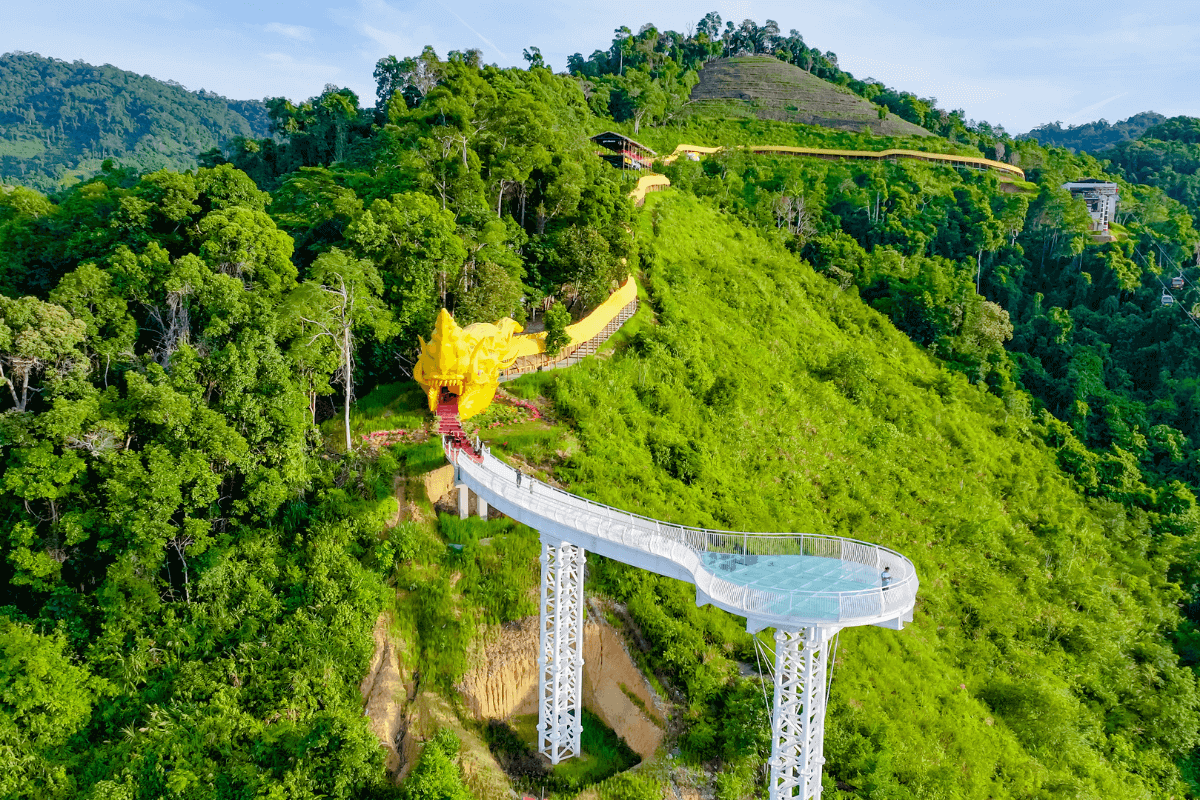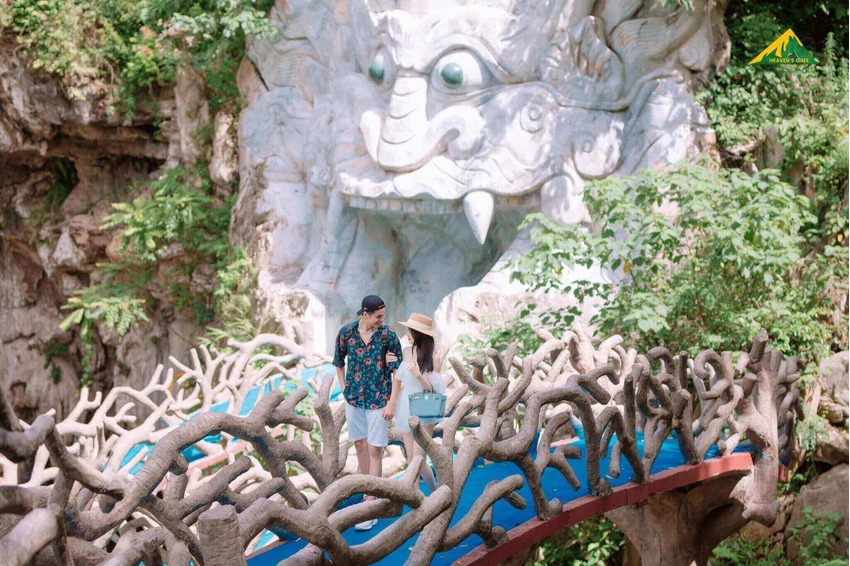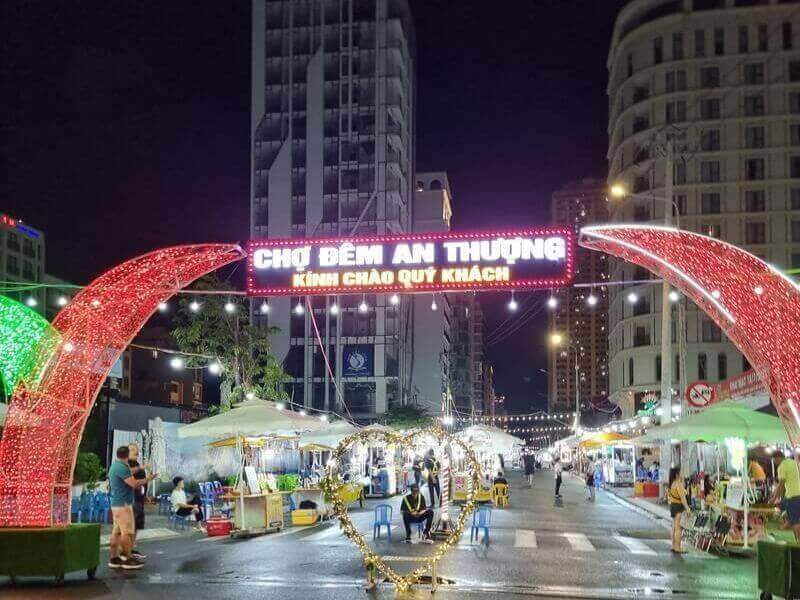Inspired by the image of the "Sacred Dragon Holding a Pearl – The Spirit of the Southern Sky", the Ngoc Rong Glass Bridge is not only a masterpiece of unique architecture but also holds profound symbolic value in the journey of developing Central Vietnam’s tourism.
An Architectural Icon – Honoring the Heritage of the Highlands
The Bao Lam Dragon Pearl complex consists of two main components: the Ngoc Rong Glass Bridge, which stretches 39 meters in length and 1.5 meters in width, modeled after the celestial pearl guarded by the sacred dragon; and a roofed walkway that mimics the graceful curve of a dragon winding along the mountainside. The Dragon Walkway spans over 1,260 square meters, with its structure rising between 3.73 and 8.85 meters, featuring a design inspired by the Ly Dynasty dragon motif.
This dual-structure complex has been recognized with a national record as Vietnam’s longest dragon-shaped roofed walkway across a mountain, with a total length of 460 meters.

Spiritual Symbol – Profound Cultural Meaning
This architectural ensemble symbolizes more than visual grandeur—it embodies deep spiritual significance. The motif of the “Sacred Dragon holding the Celestial Pearl – the Divine Energy of the South” represents auspicious fortune, vitality, and protection for this land. Walking through this corridor, visitors enter a mystical space between heaven and earth. It offers not just stunning views of the natural mountainscape, but also a journey back through time. The glass bridge glistens like a jewel under sunlight, reminiscent of sacred legends tied to the “Heaven’s Gate.” It is regarded as a sacred treasure that bestows peace and prosperity upon the region.
A Groundbreaking Step Forward for Spiritual Tourism in Central Vietnam
The inspiration for the Glass Dragon Bridge draws from the legend of the Sacred Dragon clutching the Celestial Pearl. Locals believe this site is the highest point in the area, where heaven and earth converge and where sacred energy gathers. The corridor’s design echoes the form of a dragon, with gold-accented, scaled canopy blending tradition and modernity. “This structure not only impresses with its design but also serves as a spiritual foundation for developing spiritual tourism at Cổng Trời Đông Giang,” shared Mrs. Võ Ngọc Anh, CEO of FVG Travel Group, the project's operator.
Enhanced Infrastructure, Expanded Experiences
As Quảng Nam and Đà Nẵng integrate, Cổng Trời Đông Giang is set to become a key part of the broader Da Nang tourism ecosystem.
“From 2025 to 2030, our strategy focuses on eco-spiritual and indigenous cultural tourism, combined with high-quality resort experiences. The Dragon Pearl symbol will be a new highlight that guides and links the distinctive tourist journey across Cổng Trời Đông Giang,” Mrs. Võ Ngọc Anh added.
Alongside this new landmark, the developers are restoring the ancient Cơ Tu village and investing in a series of bungalow resorts and a five‑story hotel with 800 rooms. When completed, the site will offer over 1,000 rooms to accommodate growing domestic and international visitor demand. Moreover, the key An Điềm–Cổng Trời Đông Giang route has already opened, significantly reducing travel time and making day trip tourism more convenient.

With the advantages of natural landscapes, the rich cultural identity of the Cơ Tu ethnic group, and the symbolic image of the Sacred Dragon Holding a Pearl – “Linh khí trời Nam” (Heavenly Spirit of the South), Cổng Trời Đông Giang is gradually affirming its position on the tourism map of Central Vietnam. This destination is also expected to strongly promote its brand in the international market in the near future.
“From 2025 to 2030, our goal is to develop Cổng Trời Đông Giang into a signature destination for spiritual and ecological tourism in Vietnam,” emphasized Ms. Võ Ngọc Anh.

















 Loading ...
Loading ...